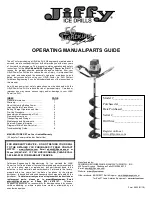
Issued / Herausgegeben / Publication
06/99
V10095
686-935 & 202-2484
Safety requirements
Please read carefully before installing. failure to do so could
invalidate your warranty.
Gas springs are filled with Nitrogen at very high pressures, and under
no circumstances should they be opened or tampered with, or
subjected to excessive heat or tension.
Gas springs should always be treated with respect in the knowledge of
the pressure internally.
As a pressurised item, it is recommended that they be returned to the
supplier for safe disposal at the end of their useful life.
As the nature of the gas spring is to lose its force over a long period of
time, it is advisable to periodically check its ability to operate as initially
intended, preferably forming part of a planned maintenance program.
replace if, and when necessary.
Installation instructions
For standard compression gas springs, we advise the use of ball joints
to alleviate possible side load. Always ensure end fittings are fully
screwed onto the gas spring thread ends before fitting.
Generally fit with piston rod down, preferably within 60 degrees to the
vertical, and avoid the spring travelling through a large arc. It is
advisable to keep the spring in a single plane movement. Failure to
adhere to this advice may result in reduced life of the gas spring. Fit the
gas spring with the cylinder or tube uppermost. The vari-lift valve will be
seen at the top of the cylinder, refer to Fig. B.
Adjustment of the grub screw - Fig 1
Ensure the 2mm allen key (provided) is located in the grub screw (A) to
its maximum depth. Undo the screw carefully by rotating anti-clockwise
until gas is heard escaping. When re-tightening care should be taken to
ensure that excessive force is not applied, as this will damage the
hexagon in the grub screw and make it inoperative.
Repeat the process releasing a small amount of gas at a time until the
required spring action is acquired. It is advisable to add approximately
10% to the weight being supported when adjusting the gas spring. This
will reduce the chance of releasing too much gas.
Under no circumstances should the grub screw be removed
Note:
A slight mist of oil may sometimes be seen escaping when
venting gas. This is normal.
Stop & stay adjustment - Fig 2
When initially fitting the gas spring, position with rod down wherever
possible.
To adjust a gas springÕs degree of hold and hence ability to Stop & Stay
in various positions, it is necessary to adjust lock nut (A) as shown on
spring tube.
Turn clockwise to increase hold, turn anti-clockwise to decrease hold.
Progressively adjust lock-nut by small increments until required gas
spring action is achieved.
Note:
Under no circumstances should excessive force be applied to
the lock nut. Only a small amount of movement is required to
adjust the friction level. Overtightening may result in
irreparable damage.
RS
Stock No.
C
B
A
D
C
A
B
A
B
Figures / Abbildung / Figures
Adjustment Instructions
Einstellanweisungen
Instructions de réglage
Instruction Leaflet
Bedienungsanleitung
Feuille d’instructions
A. Vari-lift valve
grub screw
B. Vari-lift unit
A. Vari-lift
Ventilgewindestift
B. Vari-lift Einheit
A. Vis sans t•te de
soupape Vari-lift
B. UnitŽ Vari-lift
A. Lock-nut
B. Rod
C. Cylinder
A. Kontermutter
B. Stange
C. Zylinder
A. Contre-Žcrou
B. Tige
C. Cylindre
A. Locking point
B. Econloc shroud
spring
mechanism
C. Econloc shroud
D. Push here to
release shroud,
allowing spring
to compress
A. Verriegelung-
spunkt
B. Federme-
chanismus
Econloc-Kragen
C. Econloc-Kragen
D. Hier drŸcken, um
Kragen zu lšsen.
Dadurch wird die
Feder zusam-
mengedrŸckt.
A. Point de
verrouillage
B. MŽcanisme ˆ
ressort du capot
Econoloc
C. Capot Econoloc
D. Pousser ici pour
dŽgager le capot,
en laissant le
ressort se
comprimer.
3
2
1





















